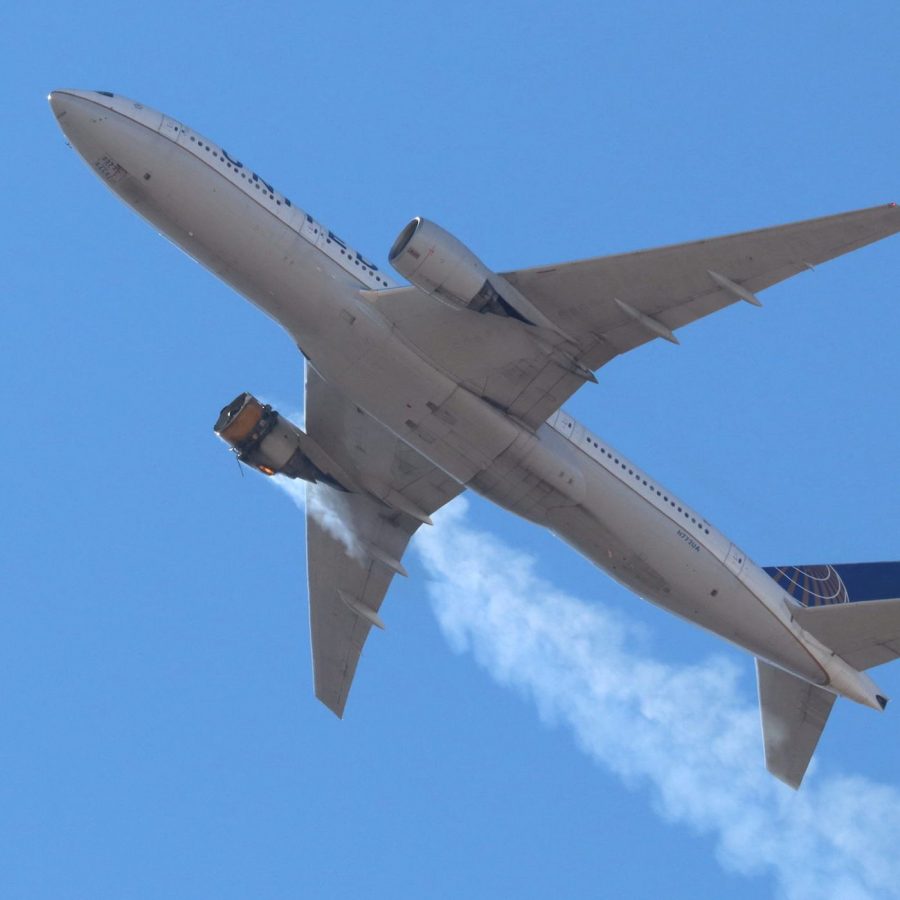Afraid to Fly?
What caused the United Flight 328 failure?
February 20, 2021, a United Airlines flight experienced an engine failure. Flight 328 from Colorado to Hawaii had 231 passengers and 10 crew members, none of whom were injured, but many were shaken up.
This incident is just the most recent of many. The Boeing 777 with the Pratt and Whitney engine has been experiencing failures more frequently than other engines. The National Transportation Secretary Board and the Federal Aviation Administration are now looking into what exactly happened to cause the engine failure, if it’s still safe to fly, and what airlines can do to prevent this from happening in the future.
On flight 328, the right engine appeared to be on fire and part of the engine cover was missing. In an interview with USA Today, David Delucia, a passenger on the flight said, “The plane started shaking violently, and we lost altitude, and we started going down. When it initially happened, I thought we were done. I thought we were going down.”
At first, the National Transportation Security Board investigators who looked into the incident thought this was an uncontained failure which means parts flying out of the plane despite the protective covering. This type of failure would have been dangerous. However, according to USA Today, it was soon concluded that it was a mere technical failure, as the parts that were flying out were contained by the protective ring. However, there is some confusion with this technicality because plane parts such as the fan cowling were missing from the plane.
The problem lies within the Boeing 777 with the Pratt & Whitney engine. United Airlines is the only U.S. carrier with planes with the affected engines. The Airline had 24 in operation and 28 in storage before voluntarily grounding them after the incident. However, passengers may still be booked on a Boeing 777 plane with GE (general electric) engines since the planes with these specific engines are still allowed to fly. These general electric engines, unlike the Pratt & Whitney engines, have a track record of safety.
According to Business Insider, The airline hasn’t needed to cancel any future trips and United may be forced to restore old aircraft from storage if the grounding lasts longer than expected. The duration of the grounding will be decided after the FAA (Federal Aviation Administration) determines if the aircraft/ engine is okay to fly.
This is not the first time a Boeing 777 United flight has endured an engine failure. In February of 2018, a flight from San Francisco to Hawaii on the same type of Boeing 777 with a Pratt & Whitney engine experienced a failure. The flight made an emergency landing and none of the 363 passengers and 10 crew members were injured.
The similarity in these two failures has people wondering if this will be a common occurrence. According to USA Today many plane experts including Ed Coleman, a former military pilot, and aviation safety expert, said, “ Overall, the number of engine failures is “infinitesimally small. This is an anomaly more than a routine thing. They’re pretty rare because of the inspection procedures.” In addition, pilots are trained to handle engine failures and are experts on what to do on the off chance there is an emergency.
Luke Georgeff ‘22 said, “I think going on a plane you always have to know there is a small chance of something like this happening, but you also have to know that it is very unlikely and the pilots are taught how to handle it. So for that reason, I don’t feel more scared now that I am aware of this incident.”
The FAA is now ordering repairs on the fans and engines. In the past, the FAA ordered fan blade inspections every 6,500 cycles (or flights), now there is a discussion of an increase in the number of inspections a plane receives. According to Reuters.com, the FAA is instructing airlines to inspect the fan blades every 1,000 cycles following guidance from Pratt. On a Boeing 777, 1,000 cycles would be about 10 months.
Planes aren’t perfect. We run the risk of engine failure every time we board one, however, it is a risk many of us are willing to take. Don’t let this flight scare you from going on planes. In fact, experiencing engine failure allows engineers and plane experts to reexamine the planes, make adjustments, and make them safer.

